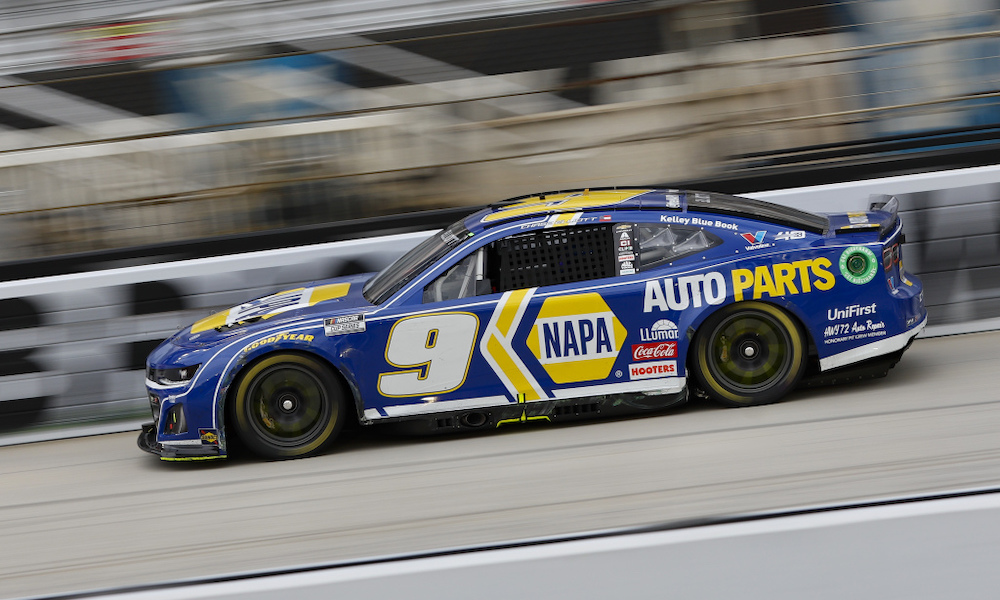
Chase Elliot hasn’t watched the tape to see how Sunday’s race at Bristol Motor Speedway looked compared to his view behind the wheel, but he’s still hearing good things.
“I had a lot of fun,” Elliott said Tuesday, “and I haven’t watched the race on TV or anything, but just in my interactions with folks that I’ve run across that have talked about it has been super positive. It was certainly a change of pace from what we typically have.”
Elliott did admit Sunday might have been more on the ‘extreme’ side of tire wear. The tire limit seemed to be 40 to 50 laps into a run, and with no rubber being laid on the track, some drivers wore the tires down to the cords.
“But even if you just left things alone and you gave the teams and the drivers an opportunity to know that was coming, I think it would probably fix a lot of it on its own,” Elliott continued. “The one thing that makes me nervous when things like this happen – and I’m really glad it sounds like the response has been positive – because the worst thing that can happen is we all get out of the car and Goodyear gets scared to death because of what we’re going to say about the tire and what kind of publicity that gives them.
“The next thing you know, we’re racing on bricks for the next 10 years because they’re scared to death of having something like that happen again because it had a bad reflection of it. And no one told us to get out and be happy – it was just a genuine thing. It was fun. A lot of the race was in your hands as a driver as to what you could do.”
A few days removed from the race, there are still questions about how and why the race turned out as it did. Was it the tire? The resin? Did the racetrack behave differently, especially with resin? Or was it weather-related?
Even visually, it was different. When the pace slowed, drivers ran side-by-side for multiple laps as if they were at a superspeedway event.
“The grip level was low enough, and the pace was slow enough that it took the aero side out of the equation,” Elliott said. “Normally you can’t get to a guy’s bumper to hit him if you wanted to without just completely wrecking your own corner doing it. So, we were going at a pace that we could be close to each other and be around each other and we were sliding around and trying not to hurt tires.
“There’s got to be some good lessons to take from this because our product could be way improved in my view, and the things that happened by accident there, I think, are a good step in doing that. I think the problem is we don’t know exactly how we got there, so how do you go halfway to making that consistent? But I just hope we don’t overreact because there were some good things that happened there on Sunday.”
Elliott’s sentiment is similar to that of many of his fellow competitors about taking lessons from Bristol to future races. There were plenty of positive post-race reactions instead of complaints about passing and the car being aero tight.
Bristol had 54 lead changes and drivers who either went forward or backward, depending on how they managed their tires. Because of that variable, it meant passing and a more enjoyable race product.
“Yes, something in that direction,” Elliott said for future races. “To that extreme, maybe not, but a tire that wears and being able to drive your car differently on the front end of a run to dictate what type of performance you’re going to have on the backend of a run, I think is a really cool thing as a race car driver.
“I enjoyed it. I enjoyed that aspect of it.”